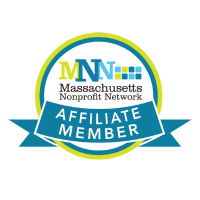Your people make it possible for your nonprofit to serve a greater good. By strategizing with your employee benefits, you can help give back to them in a way that matters.
In a recent webinar hosted by Sentinel Group in partnership with Massachusetts Nonprofit Network, Ryan Ransford and Chris O’Shea unpacked the employee benefits that many nonprofits and companies are offering to their participants. You can watch a recording of the webinar here.
This article summarizes their insights.
When working with a nonprofit, the baseline offering is health insurance. Many nonprofit organizations are either offering health insurance or trying to in order to help employees manage health care costs.
Employers can structure their health insurance plan by offering an employer contribution, where the employer determines how much their budget allows them to contribute for employees. This can help drive up enrollments and participation and makes the company a more attractive place to work.
Employer contribution amounts can vary depending on budget and what the employer can afford. Our recommendations for these limits take into account these differences between organizations.
There are different ancillary benefits many organizations add onto a program after establishing their health insurance: dental, vision, life, insurance, etc.
Since the start of the public health emergency, we have seen an increase in Employee Assistance Programs (EAPs). With these programs, you can receive confidential counseling, legal assistance, etc. These are often inclusive in some ancillary offerings, but utilization has been historically low on these programs as a result of low awareness.
Flexible Spending Accounts (FSAs), Health Savings Accounts (HSAs) and commuter benefits are popular offerings among many nonprofit organizations. They use pre-tax dollars and can be used as an attraction/retention tool apart from basic medical plans.
With an FSA, an employee can set aside pre-tax dollars within an annual plan to cover eligible medical expenses. This is a use-it-or-lose-it benefit, though some plans have a carryover feature.
One advantage to FSAs is that because of the uniform coverage rule, all money allocated is available on day one. If you haven’t contributed those pre-tax dollars yet, you still have that money to use.
An HSA must be paired with a high-deductible health plan (HDHP). Employees can set aside pre-tax dollars to cover their deductible costs. This can help offset deductible expenses an employee may have.
These dollars can be converted to an investment account and used as a savings vehicle.
These are often associated with public transportation, however, there are other expenses that can be covered, such as “bike to work” programs.
Wellness programs are another popular topic among nonprofits, and many can be implemented at little to no cost. Some examples of wellness programs employers can offer include health screenings, wellness challenges and fitness initiatives. The benefits of these programs include improved morale, lower health care costs and improved talent attraction/retention.
Since the start of the public health emergency, many employers have taken charge in helping support their employees financially. Financial wellness programs can also help employees feel confident from a financial standpoint today as well as in the future.
There are a number of different retirement plan options for nonprofit organizations. Whether you are offering a 401(k), 403(b), 457(b) plan or simple IRA, all of these plans help make sure your employees can put money away for retirement savings. Offering a retirement plan can also be a tool to improve attraction/retention strategies.
In the nonprofit industry, retirement plan benefits are often slightly richer than they are in for-profit organizations. Many have a higher employer contribution or a nonelective contribution with a matching contribution for employees.
401(k) and 403(b) plans share a lot of similarities but are not identical. For-profit companies are limited to 401(k) plans, whereas nonprofits can offer a 403(b). This can be advantageous for nonprofit organizations because of the universal availability rule. If you offer a 403(b) plan to all employees (minus any exclusions), you are following this rule and are not required to run the average deferral percentage (ADP) compliance test.
For more help with employee benefits, contact us.
This website uses cookies. By accepting the use of cookies, this message will close and you will receive the optimal website experience. For more information on our cookie policy, please visit our Privacy Policy.